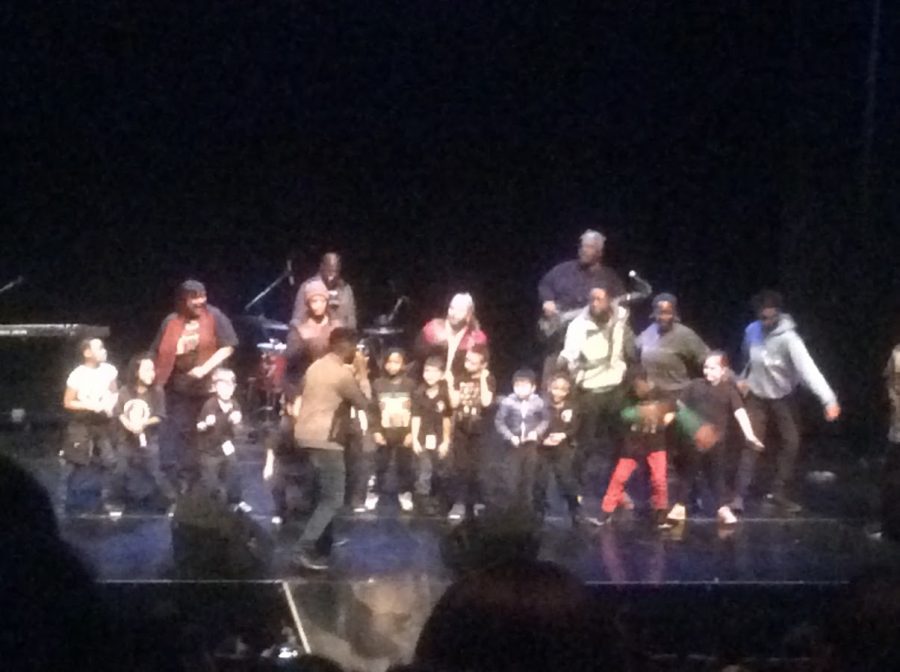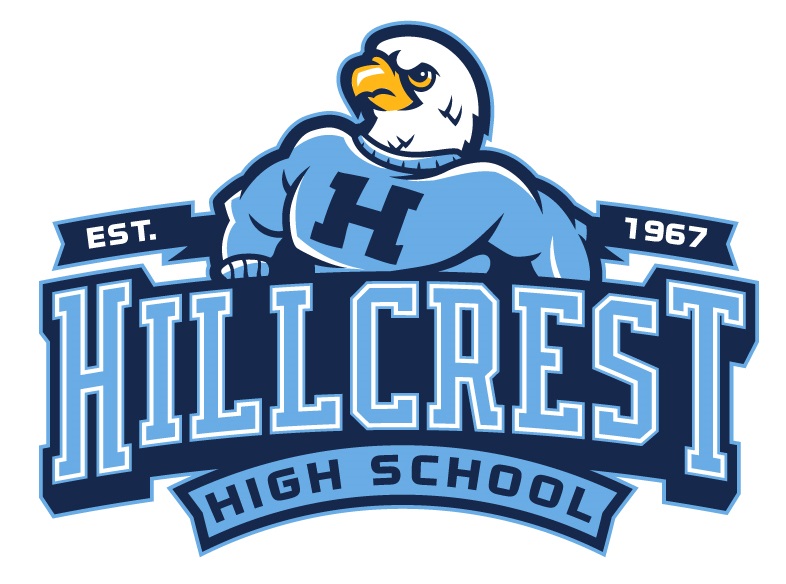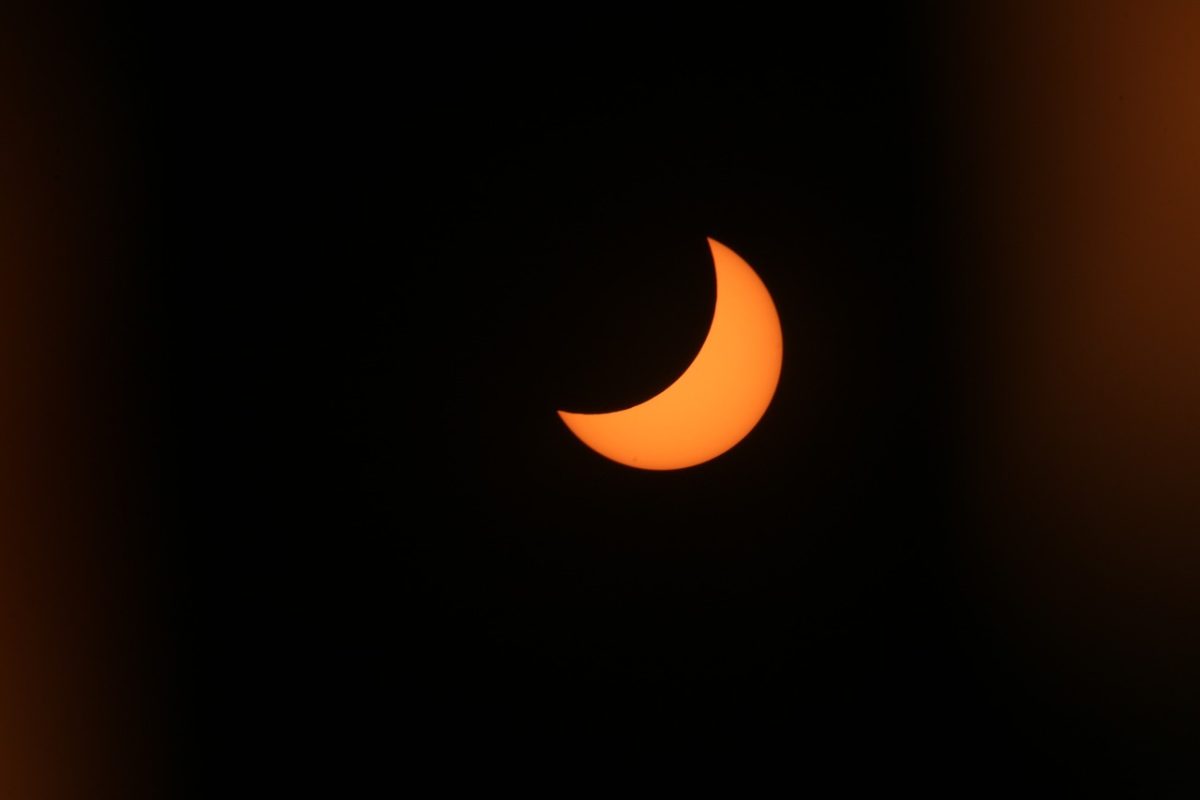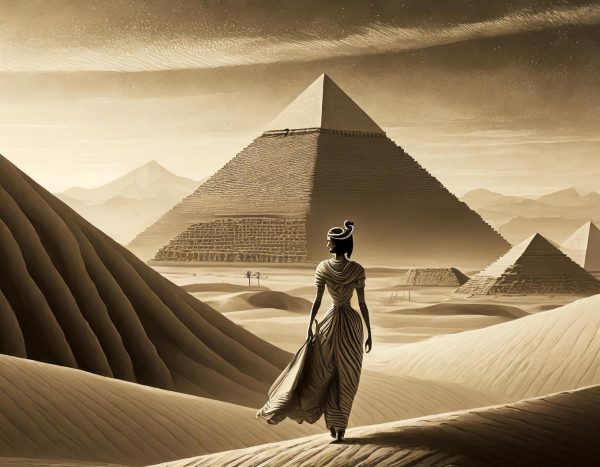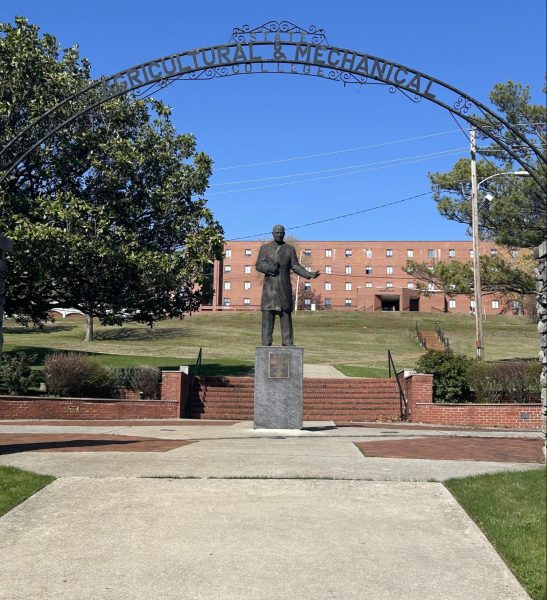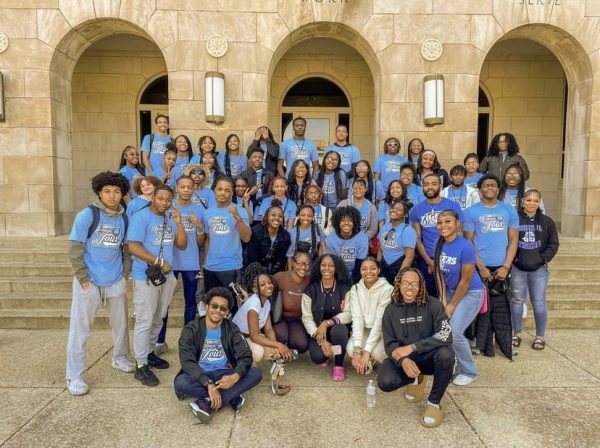A Time Traveling Performance – Evolution of African American Music: From Africa to Hip Hop
A visit to the DuSable Museum
March 11, 2018
On February 22 of this year, the students of several Hillcrest AP classes, including Ms. Snyder’s 3rd period APUSH class that I was a part of, participated in a Black History Month event at the DuSable Museum of African American History in Chicago. While there, the students attended an interactive and inspiring presentation called “Evolution of African American Music: From Africa to Hip Hop.”
Upon arriving at the museum, the collection of students was brought into the main lobby to examine a few exhibits while the show was prepared. They viewed artifacts that dated back to the slave trade as well as paintings that showed the evolution of the nearby African American neighborhoods through the years. Once everything was prepared, the group of students was ushered into the auditorium where the event was taking place. Shortly after taking their seats, the auditorium, which was filled the Hillcrest students, their teachers, and a large collection of elementary school kids, was greeted by a small band led by renowned vocalist and musician Bruce A. Henry. He welcomed us to the event, introduced his fellow band members, and proceeded to state the schedule for the day. During the course of the presentation, Henry and his band would perform and explain the various styles of African American music, from traditional African folk songs to Field Hollers, to Jazz, and even to modern Hip-Hop.
The band began by performing an original song that drew heavy inspiration from the songs of traditional Africa. Henry also simultaneously explained that this music would form the base of all future African American music following their arrival in America through slavery. From there, Henry moved into a discussion about the songs sung by slaves, as well as the purposes and ways in which they were created. This discussion climaxed with Henry calling up a number of students and staff to participate in the recreation of a field holler, a type of vocal song sung by African slaves to either communicate with each other or vent feelings. The presentation was well received by both the audience and those involved, who all proudly clapped and cheered at the end. From there the discussion jumped to the Harlem Renaissance and Blues, R&B, and Jazz. Henry named a few of the most famous singers and musicians of this era while also explaining how their work and styles related to those of past African American music. Henry also began an in-depth explanation of the distinct quirks that became synonymous with the African American musical style, such as A Capella and improvisation. This would then culminate in another interactive performance, this time involving several teachers singing improv renditions of the song “Sweet Home Chicago.” Finally, Henry and his band finished the presentations with a brief overview of the rise of disco and hip-hop, ending with a freestyle dance-off among several students and staff on the stage. They then gave the audience a brief moment to ask questions before we were let out of the auditorium.
After the presentation, the Hillcrest students were allowed to look at nearby exhibits until the buses arrived to take them back. I spent a majority of this time in the main exhibit closest to the auditorium, which discusses the history of racism in the U.S. from slavery to the Civil Rights Movement. After a brief half-hour of exploring the exhibit, I and the rest my group were led to the bus and driven back to Hillcrest, all of us satisfied with the fun and engaging presentation we experienced.



